Mugwort (Artemisia vulgaris), has a long and prominent history throughout many cultures as a herb of healing, spiritual protection and culinary merit. A fairly inconspicuously named plant, mugwort has slowly faded from our medicinal radars, whilst other modern and effective medicines have raced ahead. It however holds great importance as a plant that was part of a medicinal age that helped to develop medical histories across the world.
Mugwort is a perennial herb which you’ll find growing throughout most continents. It is considered an invasive an noxious weed in many areas. Originally thought to be native to Eurasia and Northern Africa, it spread quickly throughout North America. Likely through colonization and trade due to its revered value.
It is now widespread throughout the US, particularly in the temperate northern states. You’ll find it growing in a number of habitats, from forest and field edges, to riverbanks and roadsides. It grows quickly, and can establish itself via seed dispersal and also from its rapid expansion of rhizomes. You should not purchase and plant mugwort if it is invasive in your area but you’ll often be able to find a dense patch of mugwort.
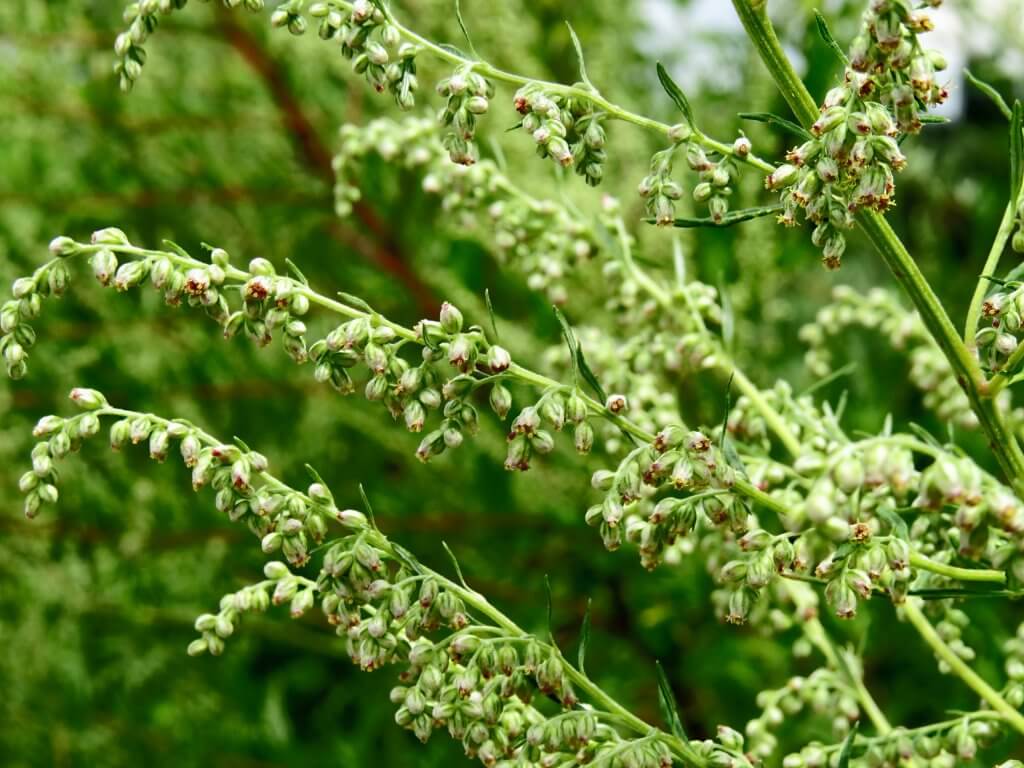
Mugwort plant identification
Mugwort can usually be easily identified by it’s wooly spikes of subtle dark yellow or deep red flowers. However as it flowers only throughout the summer, its leaves are also a good identifying factor. As a whole they have a feathered looking appearance, with each leaf stem pinnately arranged, with narrow, lobed segments branching out.
The leaves are dark green in color, but their undersides have a fine coating of hairs, giving them a soft, silvery look. Another identifying factor is its height, as it grows quickly to outcompete surrounding plants for sunlight. Its deep burgundy colored stems reaching heights of up to 150cm.
Cautions
Extremely high consumption or an overdose of mugwort does have the possibility of causing muscle spasms. Physicians and herbalists from centuries ago were able to conclude that a high dose of mugwort could have the opposite affect and cause harm rather than relief to a patient.
Mugwort was once frequently used to promote menstruation in women as it increases pelvic blood flow. So for this reason it should be avoided if you are pregnant.
As a member of the daisy family (Asteraceae), there is also the potential for mugwort to cause allergic reactions in those with sensitive skin or anyone with pollen allergies.
Uses of Mugwort
From flavoring beer and ales, curing ailments, dispelling pests and insects and even being smoked. Mugwort has one of the most varied histories of any herb.
Eating Mugwort
A close relative to the plant wormwood (Artemisia absinthium), or as its perhaps more commonly known ‘absinthe’. Mugwort has also been widely used in the flavoring of ales and spirits within medieval Europe. It was also frequently used as a spice or dried herb in many cuisines as a bitter flavoring agent for meats. Old German recipes often used mugwort to flavor poultry, especially duck and goose.
As well as a flavoring, mugwort can be harvested for use as a leafy vegetable in salads or hot dishes. The young flower buds and leaf shoots can be collected from the plant and eaten. A traditional soup recipe from Korea contains mugwort, as well as a number of Japanese and Chinese dishes.
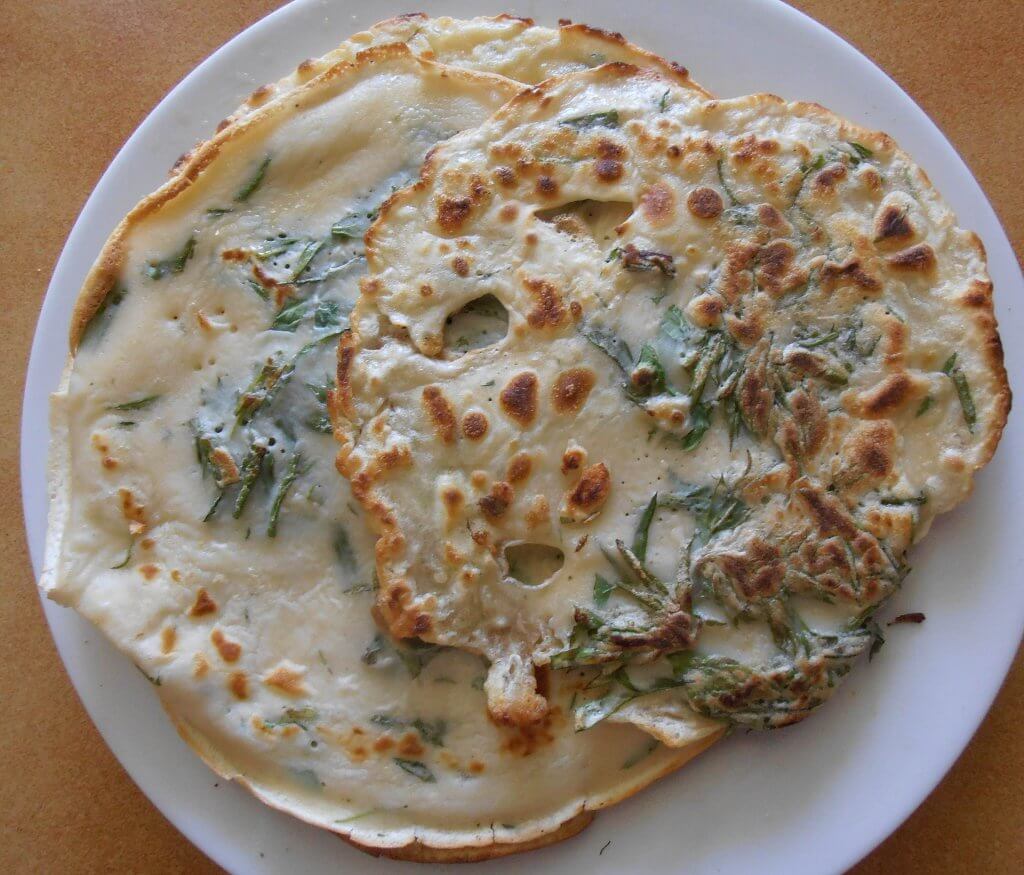
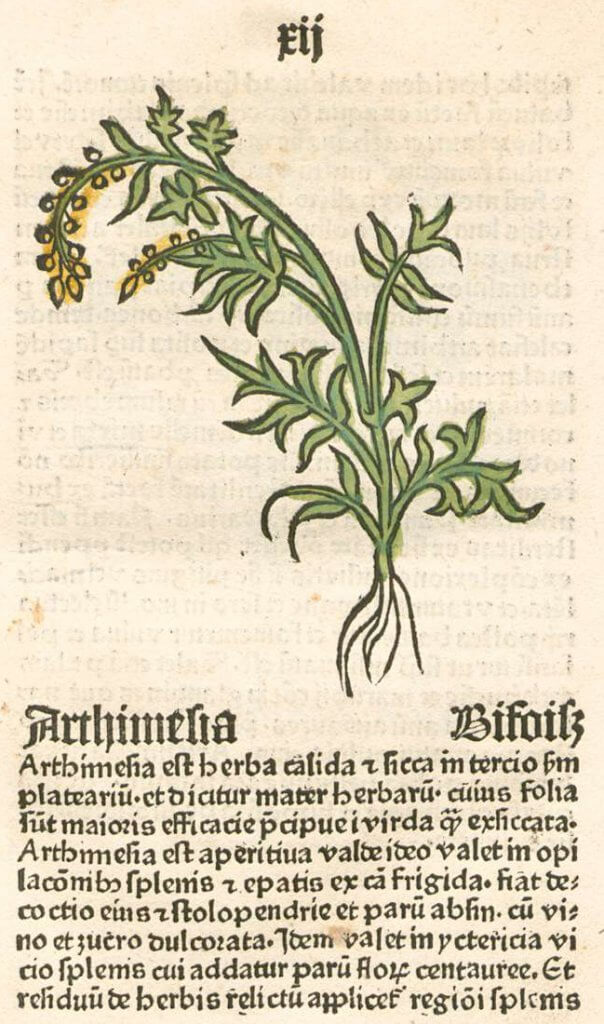
Medicinal Mugwort Uses
Within Europe mugwort was used for a range of health issues, from nervous tension to epilepsy. It was also commonly referred to as a ‘women’s herb’, as it was used to treat painful or irregular menstruation and promote labour. It was also valued as a herb which can soothe and relieve inflammations and aches.
Within Japan, Korea and China, mugwort was used to perform a medicinal therapy called ‘moxibustion’, which was intended to invigorate the skin and expel any pathogens. Other herbal remedies in Asia involving mugwort were taken to soothe and cure respiratory ailments, and even stem bleeding.
Native Americans utilised mugwort as a treatment for colds, fevers and inflammations. They also used it to regulate menstruation and labour, again hinting at the universal recognition of the plants healing abilities. Globally it was well recognised as a women’s herb, and a plant that can be used to soothe and relieve pain.
Uses Today
Many modern herbalists across the world still turn to mugwort today, in dried and fresh forms, in an attempt to harness its healing abilities. From creating a healing foot bath to rest aching feet, to drinking a blend of mugwort tea to ease anxiety and depression. Particularly in Asia, moxibustion still takes place today, and is being recognised in western culture too.
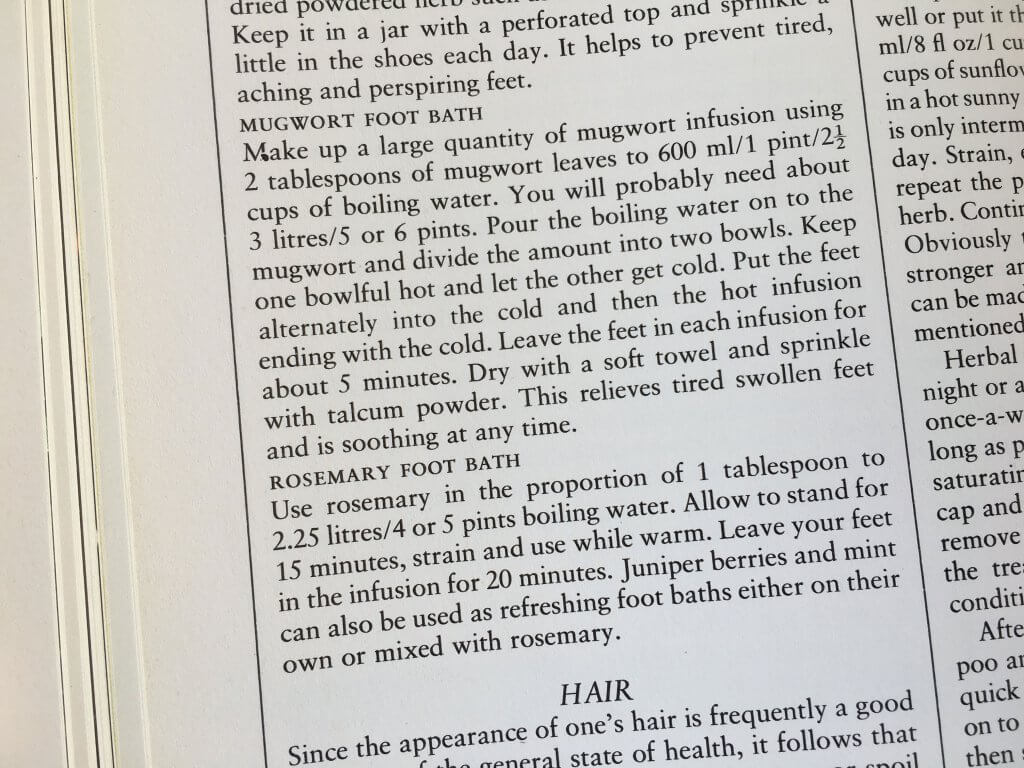
Cultural significance
From warding off evil, enhancing dreams, to being heavily relied upon as a herbal cure. Mugwort has a diverse history in many cultures.
Within Europe, it was referred to in old remedies by a number of names, including St. John’s wort, riverside wormwood and sailor’s tobacco. Its many names help in hinting to its past uses of tobacco and an absinthe (wormwood) flavoring alternative.
St. John the baptist was believed to have worn mugwort on his person as he ventured out into the wilderness. Because of this, Christians in Europe often gave mugwort to travellers before setting off on a voyage. Romans also planted mugwort along roadsides, to allow weary travellers to collect it and use it for sore feet.
Within pagan ceremonies, mugwort is held throughout dancing celebrations around a fire. It is then thrown into the flames, to bring protection to those involved.
Anglo-saxons also revered mugwort. Like fennel (Foeniculum vulgare) and hairy bittercress (Cardamine hirsuta), mugwort was considered one of 9 herbs of a sacred healing charm. When blended together, heated and applied to the mouth, ears and wound of the patient, it was believed it could cure poisoning.
Throughout English history, from the tudors to Victorian England, mugwort would be grown within contained apothecary gardens. As a valued medicinal herb it was important to always have some on hand.
In Ayurveda practices, mugwort was believed to treat a wealth of ailments, from insomnia to rheumatism.
A number of Native Americans also burnt mugwort or placed it near sleeping quarters to enhance dreams. This was to intensify any spiritual connections through dreaming, and also expel any evil dreams or nightmares.

The treatments and rituals of many cultures often combine mugwort with the use of heat, highlighting that many cultures discovered this helped to increase its benefit.
Foraging for mugwort
Look for it along hiking trails, your back yard and along disused farmers fields. The best time to harvest mugwort flowers and leaves is from early summer, into the fall.
As with all wild foraging, it is best to avoid plants from urban areas that could be contaminated from pollution.
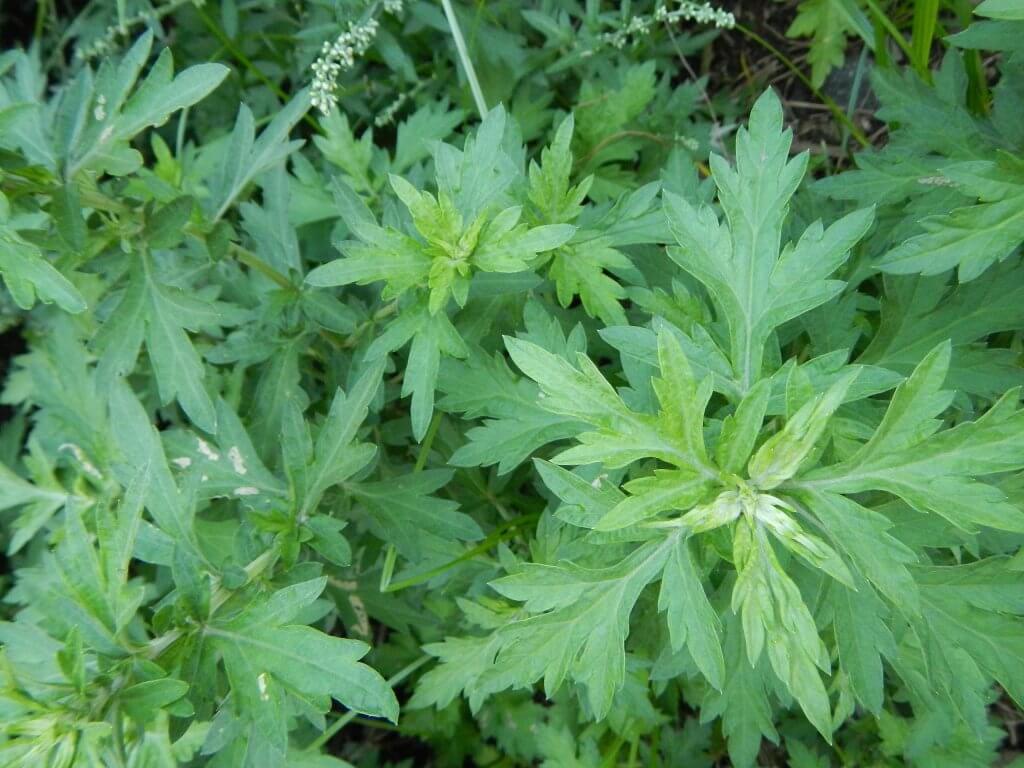
Conclusion
Mugwort is an age old herb, once greatly respected as a herb no doctor should be without. It was part of a medical age that helped to shape the way in which we interact with and use plants as medicines today. It is important that we understand and respect our connections with plants. More than just food, they are a link to the past.
Herbalism helped to pave the way for modern medicine and pharmacology. It was once the accepted form of treatment, until modern medicine was able to purify and modify the compounds within plants to enhance their benefits. What better representation of the age of herbalism than the extremely versatile but modestly named mugwort.







5 Responses
I am new to exploring your website. I find it very interesting to know the history and uses for edible plants, but it deeply saddens me to hear you say “Herbalism helped to pave the way for modern medicine and pharmacology. It was once the accepted form of treatment, until modern medicine was able to purify and modify the compounds within plants to enhance their benefits. What better representation of the age of herbalism than the extremely versatile but modestly named mugwort.” While herbalism did pave the way, modern medicine has NOT enhanced the benefits of plants. You have got to be aware of the long lists of side effects attributed to almost all pharmaceuticals, not to mention the massive number of lawsuits filed because of the damage done.
So true best herb still is lettucehealsme.com
Jessica, I agree with you 100%!
I agree with you, as I was taught some knowledge thru a medicine man I befriended. 🙏
swings and roundabouts I believe ladies. Back in ancient times we were right but we didn’t realise how right because our knowledge was restricted of the earth and even ourselves. We had to go on this road of growth and destruction to know why we have to strip it all back and revert back to the basics. If we didn’t learn the lesson we would keep going round in circles of growth and destruction. Our time now is a special time, as we have the knowledge, because of the lessons. I don’t think it’s about being angry at the facts anymore. It’s about acknowledgement of the past, acceptance of the present and how to move forward for the future. It’s all about choice at this stage. We know that the purification and modification of the plants were not any part of the plant, as they were ‘other’ chemical compounds in addition. Personally I’ll be taking away from this journal the information I need to know and ignoring the rest haha